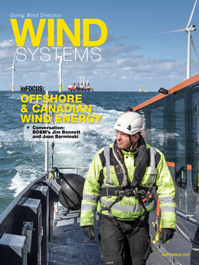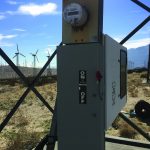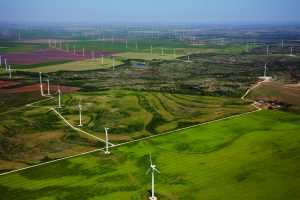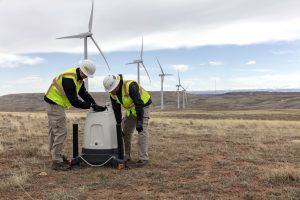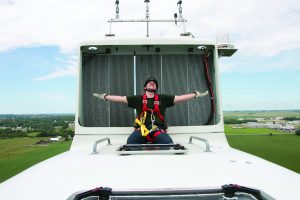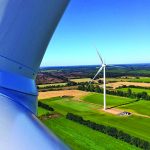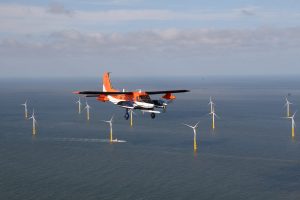The wind industry continues to post impressive numbers. The American Wind Energy Association recently reported a strong outlook for 2017, with second quarter figures indicating a 40 percent uptick in wind development activity over the same time last year.
Part of that boost in activity includes momentum in U.S. offshore wind-power development, something that may have seemed unlikely just a few years ago. After the successful completion of America’s first offshore wind farm — Rhode Island’s Block Island project — the opportunity for more U.S. offshore projects is at hand. The Maryland Public Service Commission recently approved two major offshore projects that will generate 368 MW cumulatively, and other major projects could soon be on the horizon.
Why offshore, and why now? Europe has more than 12,000-MW capacity in offshore wind infrastructure, but that has largely been driven by necessity, with far less available land for turbines to scale up the continent’s wind-power capacity. In the United States, where land is plentiful for the proliferation of wind farms, a similar case for offshore wind didn’t exist.

But that may be changing. Offshore projects bring with them more powerful and consistent wind loads, with far fewer turbine size restrictions, and that means far greater generative capacity. Consider that roughly 50 percent of the U.S. population lives in coastal areas, including both counties directly on the coast and those that drain into coastal watersheds. According to the Bureau of Ocean Energy Management, energy costs are higher in these areas, and land-based renewable resources can be limited. But offshore wind resources have the potential to deliver enormous quantities of renewable energy to the country’s largest and most populous major metropolitan areas.
Consider also that while the typical onshore wind turbine ranges from 2-3 MW, offshore turbines typically generate more than 3 MW. Work is currently being done on large-scale turbines with capacity for 7 MW and up to 10 MW and even larger, driving the potential for offshore power generation even higher.
Those on the frontier of offshore wind development are entering uncharted territory. And with that comes the need for highly engineered, highly reliable component parts for power transmission to seize the potential. The choice of a bearing supplier is critical to this process for today’s wind-turbine designers and operators to achieve the most effective wind power generation.
Onshore vs. Offshore: A Comparison
The essential functionality of a wind turbine stays the same no matter if that turbine is operating onshore or off. All turbines have towers, nacelles, three-blade design, and other common essential components.
There are a few critical differences that must be considered, however. The first primarily comes down to the size — that of the completed turbine and the component parts that go into it.
Onshore turbines hit some significant limitations revolving around their physical construction. Road conditions, bridge sizes, and weight capacities must all be considered when transporting oversized turbine components to a build site. Many of these sites are in remote regions where access may not be easy. Offshore wind, by contrast, is not limited by those same restrictions. Parts can be shipped to ports built to handle extreme sizes, though the investment in such larger turbines grows when accounting for ship-based transport. With the ability to construct larger turbines, the potential for greater generative capacity is increased.

Another important distinction is wind speeds and loads that occur in onshore versus offshore applications. In Europe, land limitations led to the early adoption of offshore farms, but there was another benefit: higher velocity and more consistent wind speeds at sea. Those conditions allow continuous and consistent operation, efficiently generating the greatest amount of power possible.
By contrast, onshore wind speeds and loads are far less consistent. And though the availability of land will likely lead to the continued adoption of onshore wind power in the United States, these installations will be less efficient than an offshore counterpart. Another factor to consider is inconsistent wind loads, causing the turbine to stop and start up again. This may, in fact, cause more stress on gearbox bearings and other components.
No matter the differences, it is clear that bearing design in all wind turbines must be rigorous and suited to the given application.
Higher Risk, Higher Reward in Offshore
As offshore turbines continue to grow and increase their energy-output potential, components and systems that make it possible are subject to greater loads and expectations. So, as opportunity grows, so does the potential for costly failure if all systems aren’t operating reliably and according to plan.
What are some of the biggest challenges? Like any industry, high-performing components are essential for efficient operation, making overall reliability and reduced maintenance a priority. Geographical location comes into play once again — where an onshore major drivetrain component replacement due to failure may cost several hundred thousand dollars, that same failure in an offshore turbine may easily stretch into the millions when the complexities of sea travel and sea-based cranes are factored into the equation.

The need for thorough engineering expertise is clear. Superior performance from gearbox bearings depends on exacting and typically customized clearances for that specific turbine’s design and power output. These bearings aren’t sold off the shelf — each is unique. In increasingly powerful applications, the right geometry, clearances, and load capacity must be custom engineered by expert partners to meet the needs and requirements of the specific project. Slight over- or under-sizing can cause serious performance issues.
Technical expertise to meet the needs of specific applications is highly valued among turbine OEMs when it comes to bearing suppliers. Likewise, product quality and integrity is paramount, because reliable performance depends on it.
Quality and Traceability
Given the high cost of bearing failure in any wind application, the integrity of materials selection is something any turbine OEM will be paying close attention to.
For example, material traceability in wind energy is a critical consideration for turbine OEMs. One faulty component can indicate a problem that reaches beyond one individual turbine. The ability to trace one damaged part to its source, and to then determine if like parts are also in use, can help operators identify problems before they happen. With the high cost of failure, complete product traceability in wind energy is not unlike that in the aerospace industry.

This kind of ability to trace products back to their exact source — including the steel heat used in manufacture — in each wind-turbine bearing is essential in wind-energy applications. Likewise, documentation is important to ensure all customer requirements are accounted for when the bearing is manufactured.
Bearing and Supplier Selection
Bearings providing the highest possible performance potential in the most compact designs help reduce overall system size, weight, and manufacturing costs. In larger and more powerful applications, reducing weight and size where possible is a significant goal. Maintaining reduced head mass size as turbines grow more powerful is important to lower the cost of energy (COE), which is a focal point for many turbine OEMs today.
For these reasons, tapered roller bearings have demonstrated unique suitability for wind turbine main bearing applications when compared to the traditional choice of spherical roller bearings. Tapered bearings are power dense, satisfying sizing demands in offshore wind applications. Designed to bear both thrust and radial loads, tapered roller bearings are also well suited for the common stresses in wind applications, including sudden changes in both wind speed and direction.

But in the end, bearing choice for any wind application, be it on or offshore, depends on finding the right design for the right application. And as wind turbines on offshore applications continue to grow larger, new design considerations will be discovered. For example, blades on a wind turbine will grow more flexible at larger sizes. This kind of material behavior can cause different forms of stress on the entirety of the turbine, requiring extensive expertise to determine accurate loads and system compliances.
Offshore wind energy is entering uncharted territory. And for wind-turbine designers and operators, close collaboration with a trusted bearing supplier will better enable problem solving, correct system design, and long-lasting reliability and performance. Seizing on the growing potential of wind energy depends on it.
















